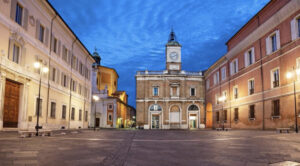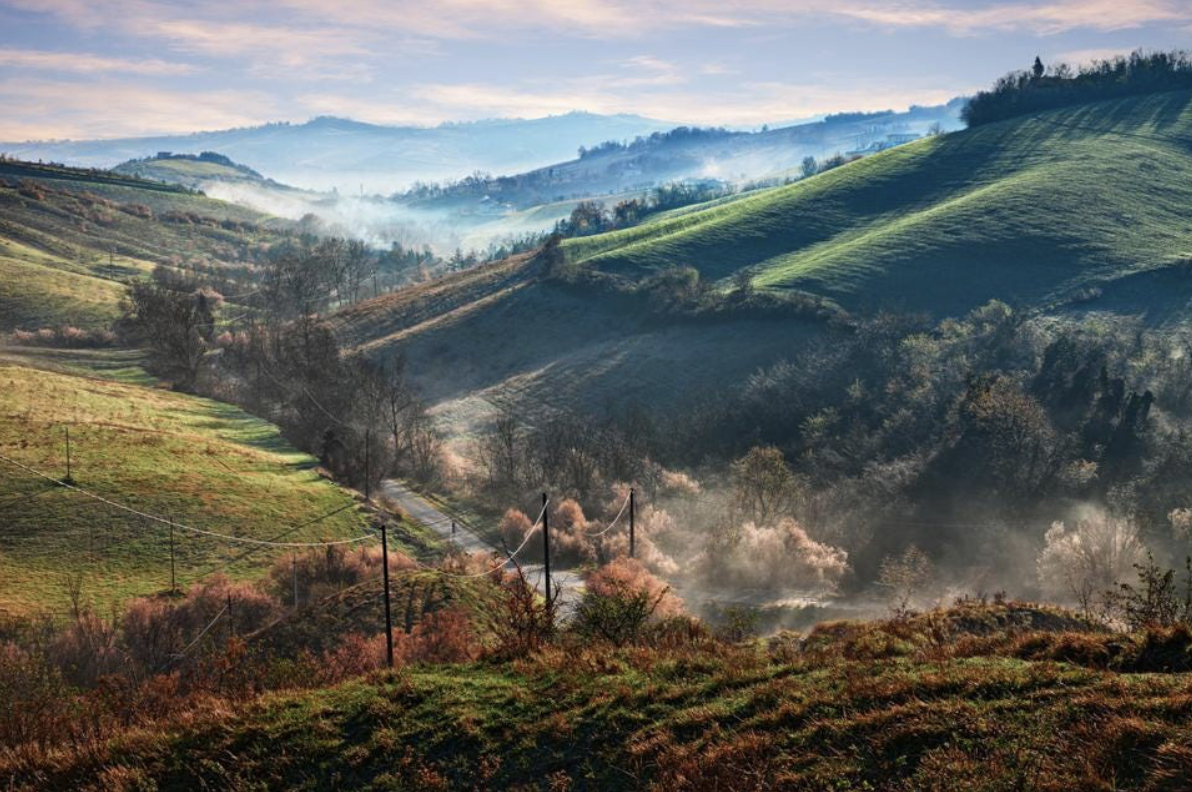This article gives a nod to one of our favorite featured wines, and we couldn’t agree more.
Celli’s I Croppi is a special wine.
Celli. I Croppi. Romagna Albana Secco. DOCG. 2021. 89 points.
Aromas of green apples, green grass, mandarins and tropical fruits. Zippy acidity and well integrated fruit flavors. Fresh and luscious mouth feel.
 Italy has 20 different geographical regions, and Emilia-Romagna—in the north—is both wealthy and geographically diverse. Bordered by six other regions that also produce wine—Marche, Tuscany, Liguria, Piemonte, Lombardy, and Veneto—Emilia-Romagna is named after a Roman road that followed the foot of the Apennine Mountains, named Via Aemelia, as well as Romagna, a once capital region of the waning Roman empire that was then based in the city of Ravenna.
Italy has 20 different geographical regions, and Emilia-Romagna—in the north—is both wealthy and geographically diverse. Bordered by six other regions that also produce wine—Marche, Tuscany, Liguria, Piemonte, Lombardy, and Veneto—Emilia-Romagna is named after a Roman road that followed the foot of the Apennine Mountains, named Via Aemelia, as well as Romagna, a once capital region of the waning Roman empire that was then based in the city of Ravenna.
According to Carol Plantamura in her book When in Emilia Romagna—the wines of the region fall into two distinct categories—generally light and dry in Emilia to the west, and richer and full bodied in Romagna to the east.
Some local winemakers call Emilia-Romagna ‘flyover country’ as well as a land of fast cars and slow food (car and motorcycle manufacturers here include Ferrari, Lamborghini, Maserati and Ducati).
Within Romagna region, travel through the provinces of Bologna, Ferrara, Ravenna, Forlì-Cesena and Rimini and you will find the white wines spry, and much of the red Sangiovese stunning. Wineries are plentiful.
Romagna white wines include those made from the Famoso grape (which does not fare well in cold temperatures), the Longanesi grape (which loses productivity abruptly with age), and the Albana grape—which created Italy’s first ever DOCG quality white wine (thin skinned, rich in polyphenols, strong with tannins and dripping with aromas of green apples and white pears). Another white is Trebbiano, with significant variations in quality.
Red Sangiovese wines from Romagna can be concoctions of Amarone and minestrone aromas and flavors, often with silky tannins and chirping with acidity. These wines were created to be enjoyed with food—consider cappellietti pasta with white cuttlefish ragu and mantis shrimp, or asparagus salad with broad beans, peas, saltwort with a cream of almonds and hazelnuts. Or the Italian favorite of cinghiale wild boar.
If you are interested in a deep rabbit hole cruise through the wines of Romagna, here’s the full link:
https://www.forbes.com/sites/
